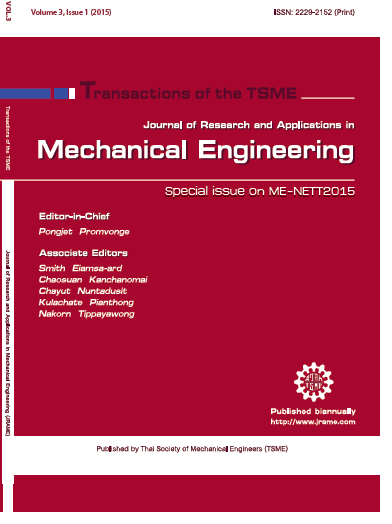Performance of high‐order schemes on collocated and staggered grids
Main Article Content
Abstract
Direct numerical simulation of turbulent flows requires tremendous amount of computational power because it is necessary to resolve the spatial structures of the flow down to the Kolmogorov length scale. This procedure generates the socalled grids or meshes. There are two competing grids favour, namely a collocated and staggered grid. To date, it is unclear which one is superior in terms of the resolution power. Recent advance in numerical methods for solving turbulent flows indicates that a staggered grid could be a better candidate for solving turbulent flows due to its superiority in mass-conservation. In order to clarify this possibility, the accuracy of these two grids must be tested using an identical numerical method. In this work, we use a pseudo-spectral method to mimic the behaviour of each numerical approximation. The effects of numerical errors are represented by the modified wavenumber which is then converted back to the physical space. The numerical methods considered in this work are the second-, fourth- and sixth-order central-finite-difference approximations. First a priori error analysis will be investigated, followed by a posteriori error analysis and cross-correlation against the reference solution from the pseudospectral scheme. It is found that the second-order scheme on a staggered grid is as good as the fourth-order scheme on a collocated grid which costs twice more expensive.
Article Details
This work is licensed under a Creative Commons Attribution-NonCommercial-ShareAlike 4.0 International License.
References
[2] Rhie, C.M. and Chow, W.L. Numerical study of the turbulent flow past an airfoil with trailing edge separation, AIAA Journal, Vol. 21(11), 1983, pp. 1525-1532.
[3] Henshaw, W.D.A fourth-order accurate method for the incompressible Navier-Stokes equations on overlapping grids, Journal of Computational Physics, Vol.113, 1994, pp. 13-25.
[4] Vasilyev, O.V. High order finite difference schemes on non-uniform meshes with good conservation properties, Journal of Computational Physics, Vol.157, 2000, pp. 746-761.
[5] Verstappen, R.W.C.P. and Veldman, A.E.P. Symmetry-preserving discretization of turbulent flow, Journal of Computational Physics, Vol.187, 2003, pp. 343-368.
[6] Gullbrand, J. An evaluation of a conservative fourth order DNS code in turbulent channel flow, Center for Turbulence Research Annual Research Briefs, 2000, pp. 211-218.
[7] Amiri, A.E., Hannani, S.K. and Mashayek, F. Evaluation of a fourth-order finite-volume compact scheme for LES with explicit filtering, Numerical Heat Transfer, Part B, Vol.48, 2005, pp. 147-163.
[8] Hokpunna, A. and Manhart, M. Compact fourth-order finite volume method for numerical solutions of Navier–Stokes equations on staggered grids, Journal of Computational Physics, Vol. 229(20), 2010, pp. 7545-7570.
[9] Rogallo, R.S. (1981). Numerical experiments in homogeneous turbulence, NASA Technical Memorandum 81315.
[10] Spalart, P.E., Moser, R.D. and Rogers, M.M. Spectral methods for the Navier-Stokes equations with one infinite and two periodic directions, Journal of Computational Physics, Vol.96(2), 1991, pp. 297-324.
[11] Mansour, N.N. and Wray, A.A. Decay of isotropic turbulence at low Reynolds number, Physics of Fluids, Vol.(6), 1994, pp. 808-814.



